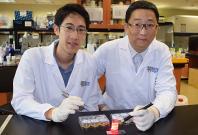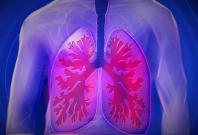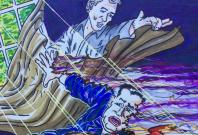 Woman from Arizona has woke up with a British accent on one fine day, medical experts explain it differently
Woman from Arizona has woke up with a British accent on one fine day, medical experts explain it differently
 Scientists have developed a simple new DNA test that can detect 193 genetic diseases including anaemia, epilepsy and metabolic disorders in a newborn's genes.
Scientists have developed a simple new DNA test that can detect 193 genetic diseases including anaemia, epilepsy and metabolic disorders in a newborn's genes.
 Scientists have developed a new optical imaging system that uses red- and near-infrared light to predict response to chemotherapy by as early as two weeks.
Scientists have developed a new optical imaging system that uses red- and near-infrared light to predict response to chemotherapy by as early as two weeks.
 These digital cancer samples in the virtual biobank are made up of high-resolution microscopy images in both 2D and 3D, plus important clinical and molecular information that may provide the foundation for virtual research into cancer.
These digital cancer samples in the virtual biobank are made up of high-resolution microscopy images in both 2D and 3D, plus important clinical and molecular information that may provide the foundation for virtual research into cancer.
 In the midst of escalating tensions associated with yellow fever, more than 200 monkeys were killed by people in Rio de Janeiro.
In the midst of escalating tensions associated with yellow fever, more than 200 monkeys were killed by people in Rio de Janeiro.
 A new study has found that the liquid used in e-cigarettes could cause damage to lungs over long-term abuse.
A new study has found that the liquid used in e-cigarettes could cause damage to lungs over long-term abuse.
 Using ultrasound and a blood test for high alpha-fetoprotein (AFP) levels together improves detection of early-stage liver cancer significantly.
Using ultrasound and a blood test for high alpha-fetoprotein (AFP) levels together improves detection of early-stage liver cancer significantly.
 Australian researchers said that they have developed the first virtual platform for storing 3D copies of human cancer tissues.
Australian researchers said that they have developed the first virtual platform for storing 3D copies of human cancer tissues.
 Combining an anti-angiogenesis agent with an immunotherapy agent, has shown promising anti-tumour activity in an early phase clinical trial in patients with advanced kidney cancer.
Combining an anti-angiogenesis agent with an immunotherapy agent, has shown promising anti-tumour activity in an early phase clinical trial in patients with advanced kidney cancer.
 Researchers said that it is due to the high energy requirements of livestock farming as well as the very large contribution of livestock to greenhouse gas emissions.
Researchers said that it is due to the high energy requirements of livestock farming as well as the very large contribution of livestock to greenhouse gas emissions.
 "FLECS" key component is a flexible rectangular plate with more than 100,000 uniformly spaced X-shaped micropatterns of proteins.
"FLECS" key component is a flexible rectangular plate with more than 100,000 uniformly spaced X-shaped micropatterns of proteins.
 The new e-skin has sensors embedded to measure pressure, temperature, humidity and air flow.
The new e-skin has sensors embedded to measure pressure, temperature, humidity and air flow.
 The therapy proved to be effective in lung tissue repair after being used on six patients suffering from interstitial lung diseases and two with bronchiectasis.
The therapy proved to be effective in lung tissue repair after being used on six patients suffering from interstitial lung diseases and two with bronchiectasis.
 Georgian College of Ontario, Canada has decided to cancel a three-year diploma college in homeopathy after facing opposition from the public.
Georgian College of Ontario, Canada has decided to cancel a three-year diploma college in homeopathy after facing opposition from the public.
 Researchers have found that continuous low doses of "far ultraviolet C" (far-UVC) light can kill airborne flu viruses without harming human tissues.
Researchers have found that continuous low doses of "far ultraviolet C" (far-UVC) light can kill airborne flu viruses without harming human tissues.















